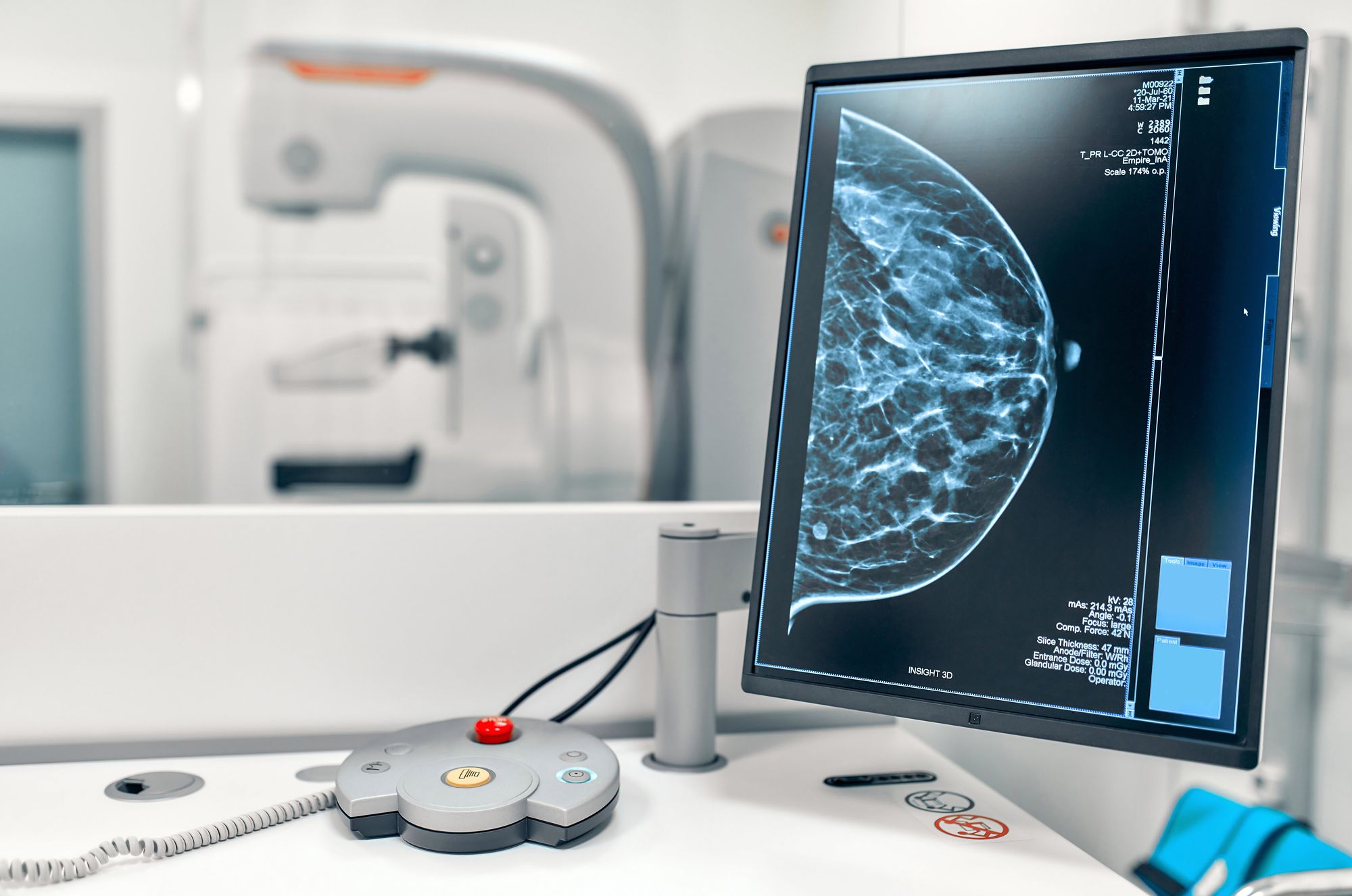
October is Breast Cancer Awareness Month, and it’s important to raise awareness about mammograms. What is a mammogram, who should get one, do they hurt, and what they can reveal? We’ll be answering all of these questions in this article.
If the idea of getting a mammogram scares you, you’re not alone. Getting a mammogram can be a somewhat frightening experience. Not just because of what the results may show, but also because the mammogram machine itself is big and scary. You know it’s going to hurt or at least feel very uncomfortable when it squishes your breasts to get the imaging. It’s not a pleasant experience, but it’s not that terrible. After all, a mammogram is a quick exam that only takes a few minutes. It’s well worth your time – and a few minutes of discomfort – to potentially save your life through an early diagnosis of breast cancer.
Sometimes, the best way to assuage your fear about something, is to simply learn more about it. Educate yourself so that you feel more comfortable about it. With that being said, let’s start with an overview of the most common question: What is a mammogram?

What is a Mammogram?
A mammogram is ordered by your doctor to get X-ray imaging of your breasts, to check for signs of breast cancer. Mammograms are the best breast cancer detection tests, and these special X-ray machines have the ability to detect breast cancer quite early. Sometimes, a mammogram can find breast cancer years before you would have felt symptoms such as a lump in the breast. That’s how advanced the imaging is. Some lesions are so tiny that you’d never feel them, but the mammogram can see them.
The ability of mammograms to detect breast cancer early is great news, since breast cancer is one of the types of cancer that has a very high survival rate when caught early.
Note that it’s a myth that one should only schedule a mammogram if they find a lump in their breast through a self-examination of their breast.
While general screening mammograms are conducted on women over 40 (or women over 30 if they have a strong family history of breast cancer) with or without symptoms – lump or no lumps – different measures are taken if you have a lump in your breast.
To determine whether the lump you found is benign, your doctor will likely order a mammogram as well as a breast ultrasound, after first confirming that there is indeed a lump in your breast. Additional screenings such as a breast MRI, PET/CT or scintimammography are also sometimes ordered if there are obvious symptoms of breast cancer.

How is a Mammogram Done, and Do Mammograms Hurt?
When you arrive at your appointment to get your mammogram, you’ll need to undress from the waist up. A mammogram is done while you are in a standing position in front of the machine. This is because the mammogram machine has to flatten your breast tissue in order to get the imaging.
The technologist will place your breast on the machine’s lower plate. The upper plate will firmly press and flatten your breast by being lowered onto your breast from above. This is how the technologist gets proper imaging of your breast tissue. The technologist will scan both breasts.
Yes, mammograms do hurt a bit, because your breasts are being squished between the two plates. It can feel like pinching, or just uncomfortable pressure.
While not everyone will find a mammogram painful, most women will agree that it feels uncomfortable. They’re glad it doesn’t take long, as the pain or discomfort only lasts moments.
To reduce the odds that the pressure of the mammogram will be more than uncomfortable and border on painful, you’ll want to avoid getting a mammogram during your period.
Similarly, the week before your period is also not the ideal time to get a mammogram. This is because many women have sore or tender breasts the week before their period, or while they’re having their period. There is no strict rule that you can’t get your mammogram during your period, because you can, it just might hurt more.
Something that is a strict rule, however, is not to wear any body lotion, perfume, or deodorant to your mammogram screening.
Who Should Get a Mammogram?
According to BC cancer, the people who should seriously consider getting their doctor to schedule a mammogram for them include:
- Women ages 30 and older if they are at especially high risk because they are a carrier of the breast cancer causing gene mutation (If they’re a carrier of the BRCA1 or BRCA2 gene mutation, or have a parent who is a BRCA1 or BRCA 2 carrier).
- Women ages 40 and older who have a family history of breast cancer, such as their mother or sister got breast cancer.
- Women aged 45 and older with no family history.
As you can see, the age you should start getting mammograms depends on your risk factor. Women need to start getting mammograms earlier if they have a family history of breast cancer.
If you’re genetically at higher risk of getting breast cancer, you’ll want to start getting screening mammograms annually in your 30s.
You can find out if it’s in your DNA to be at higher risk of breast cancer (and other cancers and diseases) through a CircleDNA test. If, through a DNA test, you discover that you have a gene mutation in one of the breast cancer genes, BRCA1 or BRCA2, you should get annual mammograms starting as young as 30.
If you’re not a carrier of any cancer-causing gene mutations, and you don’t have any family history of breast cancer, you are likely safe to get mammograms every two years starting in your 40s until you’re 75 years old.
After the age of 75, some women stop getting mammograms, or they start getting them less frequently, such as every three years.
Remember that screening mammograms are conducted for preventative purposes. Catching breast cancer early via a mammogram’s advanced imaging gives you a great shot at survival. A radiologist will look at your X-ray images for early signs of breast cancer, and if you’re in the clear, you won’t need another mammogram for 1 – 2 years depending on your genetic risk factors.
Although mammograms are slightly uncomfortable, they don’t take long at all (only minutes) and you also don’t have to get them done often (only every 1-2 years.) For the sake of your health, you should be a responsible adult and schedule your mammograms, and show up to the appointment.
References:
- Who Should Get a Mammogram? BC Cancer Screening: http://www.bccancer.bc.ca/screening/breast/get-a-mammogram/who-should-get-a-mammogram





